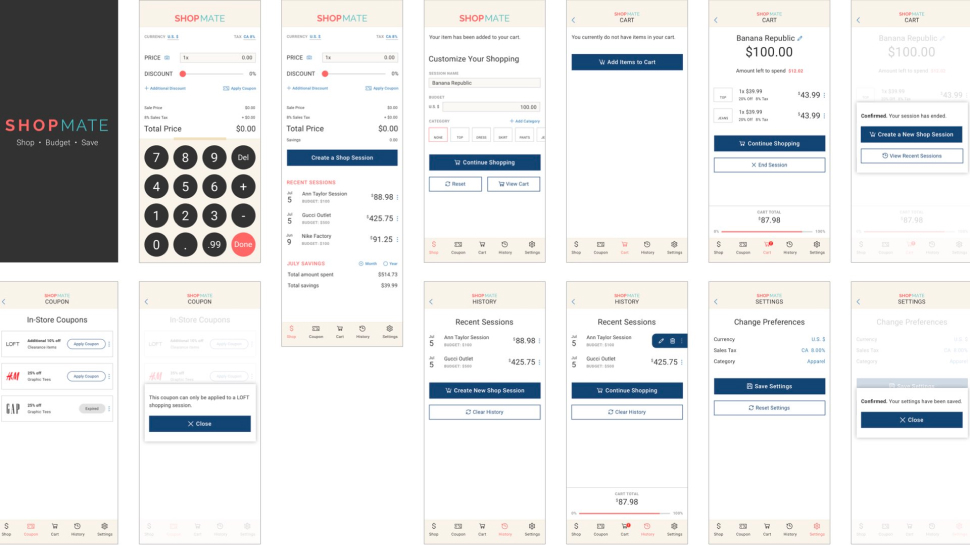Shop Mate
E-Commerce
Reinventing the in-store shopping experience
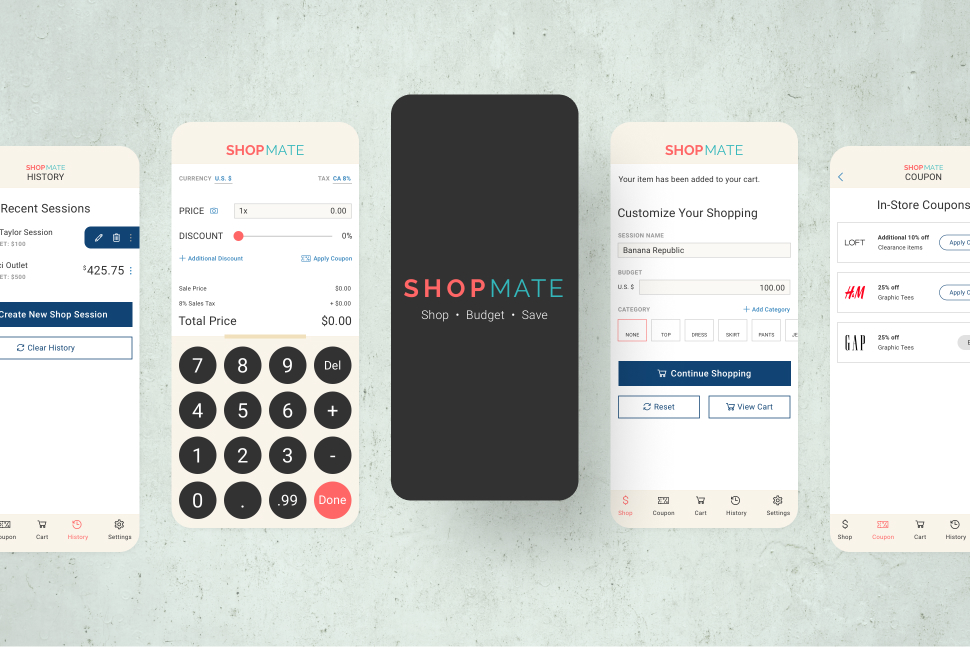
ROLE: UX Research, UX Design, UI Design
METHODS: In-Depth Interviews, Data Synthesis, Paper Prototyping, Persona Creation, LoFi Wireframe Creation, Digital Prototyping, HiFi Mockup Design, Task Analysis, Usability Testing, Design Pattern Standardization
TOOLS: Paper, Mural, Balsamiq, Sketch, Validately
TEAM: Solo
Business challenge
Traditional shopping experiences leave customers with budget uncertainty—they struggle to accurately calculate final costs when discounts, taxes, and promotional offers are applied. This uncertainty leads to budget overruns, purchase hesitation, and ultimately reduced customer satisfaction. Research revealed shoppers were resorting to basic calculator apps or abandoning accurate calculations altogether, highlighting a significant gap in the digital shopping experience.
My role & leadership
As the sole UX Designer on this initiative, I owned the complete product development lifecycle from research through design validation. I defined the strategic approach, established research protocols, created the design system, and made critical decisions about feature prioritization to ensure the MVP delivered maximum value while maintaining development feasibility.
Strategic approach
I approached this challenge by:
- Establishing user need: Conducted in-depth interviews with diverse shoppers to validate the hypothesis that calculation difficulties were affecting purchasing decisions
- Prioritizing key features: Analyzed research findings to identify the most critical pain points—complex discount calculations, budget management, tax considerations, and multi-store shopping
- Developing testing framework: Created a multi-stage validation process that allowed for rapid iteration while minimizing development resources
- Balancing complexity: Designed for both quick one-off calculations and comprehensive shopping sessions to accommodate different user behaviors


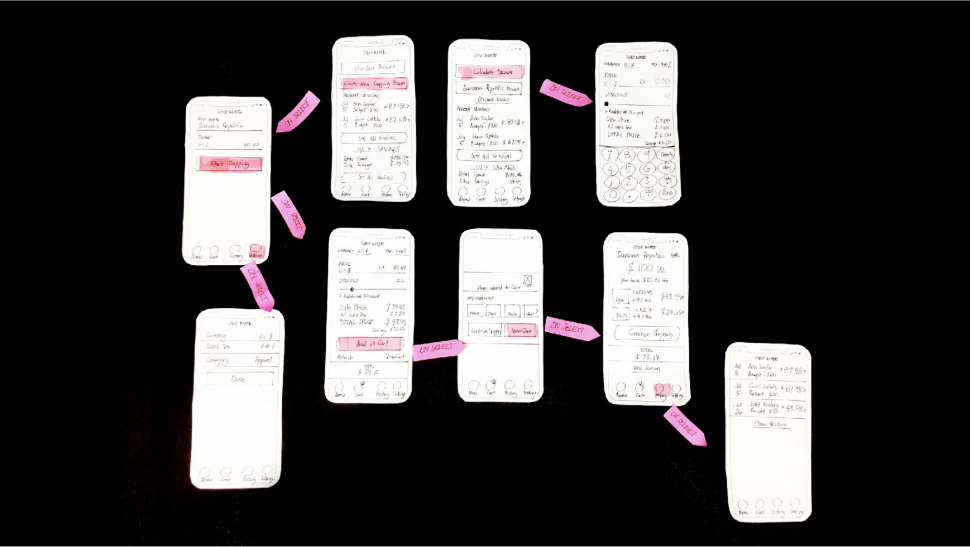
Key decisions & execution
Research revealed two distinct user patterns—quick single-item verification and full shopping session tracking. Rather than forcing users into a single workflow, I made the strategic decision to support both behaviors within a unified experience. Critical design decisions included:
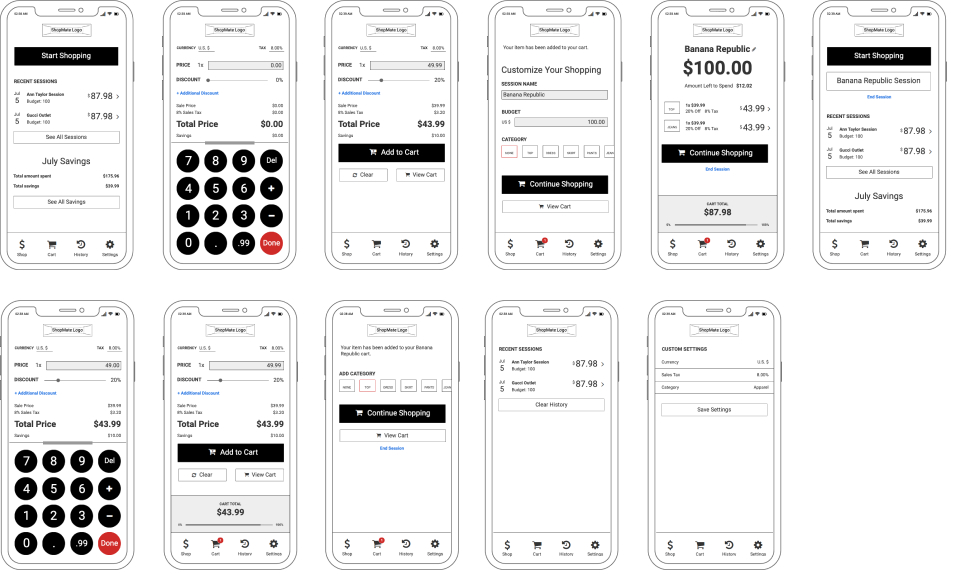
- Immediate value delivery: Prioritizing instant calculation access over account creation or complex onboarding
- Progressive disclosure: Designing a UI that revealed advanced features gradually as users demonstrated comfort with core functionality
- Visual feedback: Prominently displaying savings amounts to reinforce the app's value proposition and encourage continued use
When paper prototype testing revealed confusion between calculation modes, I pivoted to a more intuitive interface that oriented users to the primary use case first, with session management as a secondary function.
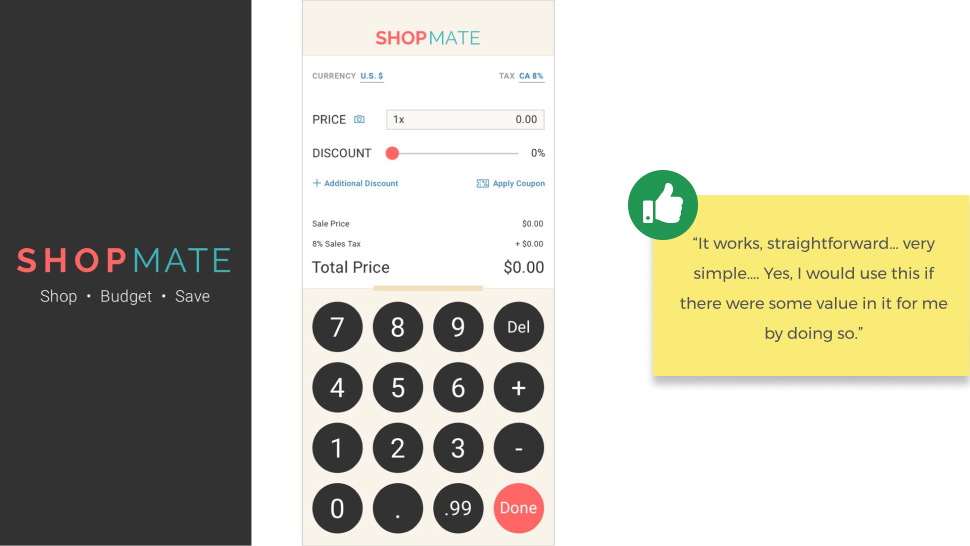
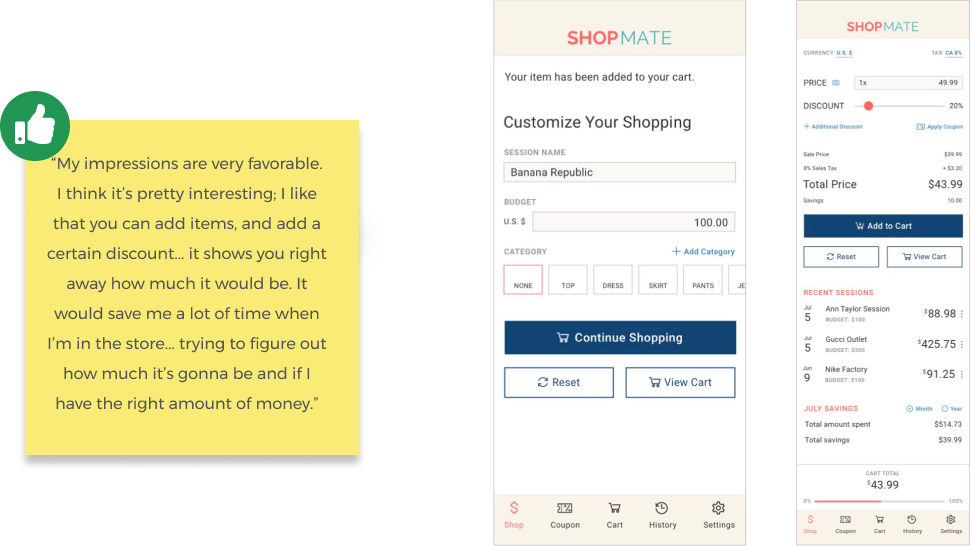
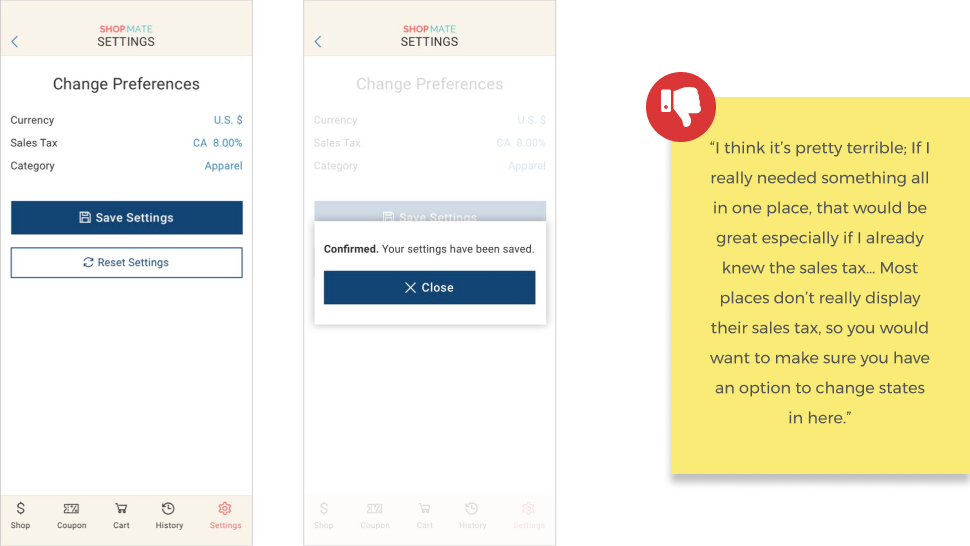
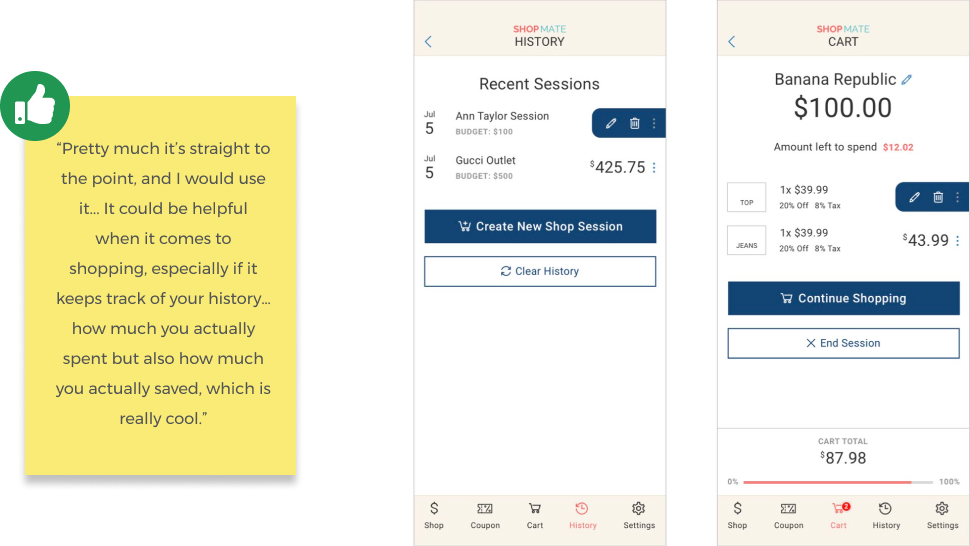
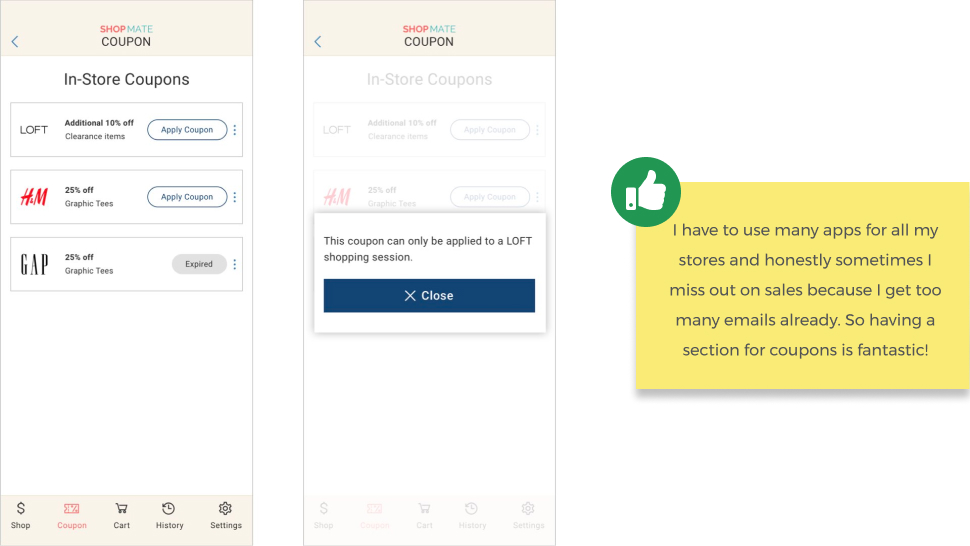
Business impact
The Shop Mate MVP validation showed significant potential for market adoption:
- User preference: Most test participants indicated they would use the app in future shopping trips
- Task completion: Users successfully completed discount calculations with minimal guidance after initial orientation
- Feature validation: Core functionality of discount calculation and savings tracking received positive feedback, confirming product-market fit
